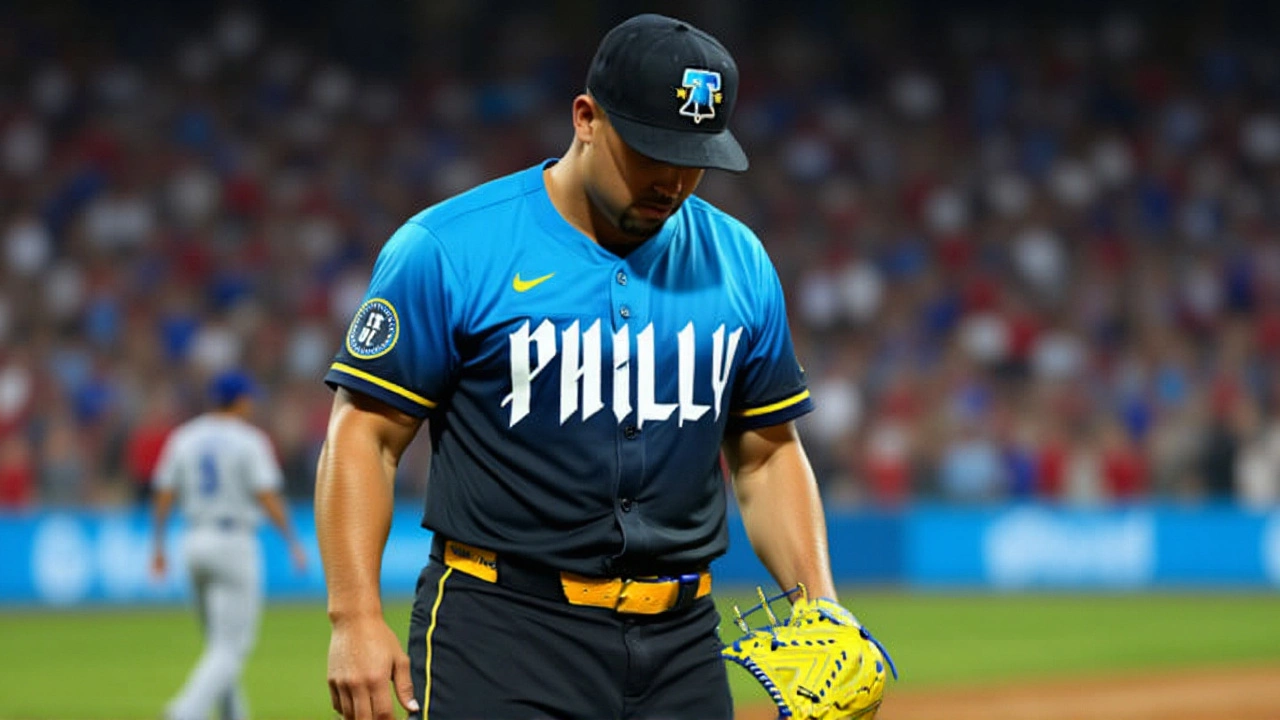Philadelphia Phillies – Your Go‑to Hub for Team News and Insights
When talking about the Philadelphia Phillies, a professional baseball franchise based in Philadelphia, Pennsylvania, competing in the National League East division of Major League BaseballPhillies, you’re diving into a club with more than a century of highs, lows, and unforgettable moments. Whether you’re a lifelong fan or just curious about their latest moves, this page gives you the context you need before you scroll through our curated stories.
How the Phillies Fit Inside Major League Baseball
At the core of any discussion about the team is Major League Baseball, the umbrella organization that runs the sport’s top professional leagues in the United States and Canada. The Phillies are one of 30 clubs that make up MLB, and they belong to the National League (NL) East division, battling rivals like the New York Mets and the Washington Nationals across a 162‑game schedule. This structure means the Phillies must meet league‑wide standards for player contracts, revenue sharing, and competitive balance. In other words, Philadelphia Phillies success is tightly linked to how they navigate MLB’s rules, draft, and free‑agency market.
Understanding the league’s framework helps you see why the Phillies focus heavily on scouting and player development. The franchise’s farm system feeds talent into the big‑league roster, and MLB’s international signing period adds a global dimension to the team’s talent pipeline. This league‑team relationship illustrates the first semantic triple: Philadelphia Phillies is a member of Major League Baseball. The second triple follows: Major League Baseball requires each franchise to maintain a compliant farm system. And third: Philadelphia Phillies leverages its farm system to stay competitive in the National League East.
Beyond the league, the Phillies also interact with several other entities that shape their season. The National League East, a division that includes the Phillies, Mets, Nationals, Braves, and Marlins sets the immediate competitive landscape. Winning the division often means a direct path to the postseason, while finishing lower pushes the team into a rebuilding phase. These dynamics make every win, loss, and statistical trend matter more than just a number on a scoreboard.
Speaking of numbers, the team relies heavily on baseball statistics, quantitative measures like batting average, on‑base percentage, slugging, ERA, and WAR that evaluate player performance. Modern analysis tools turn raw data into actionable insight, guiding decisions on line‑ups, pitching rotations, and trades. For example, a high WAR (Wins Above Replacement) for a pitcher like Aaron Nola can justify a contract extension, while a low OBP (On‑Base Percentage) for a hitter may trigger a coaching adjustment. This creates the semantic triple: Philadelphia Phillies relies on baseball statistics to evaluate talent. Another: Baseball statistics influence roster construction for Major League Baseball teams. And finally: National League East competitors also use baseball statistics to gain a strategic edge.
All of this data comes alive at the team’s home venue, Citizens Bank Park, a 42,000‑seat stadium in Philadelphia that hosts Phillies home games and various community events. The park’s design, from its iconic skyline backdrop to its fan‑friendly concourses, contributes to a vibrant game‑day atmosphere. The stadium’s capacity and modern amenities also affect revenue streams, which in turn support player acquisitions and farm system investments. Here’s a clear link: Citizens Bank Park hosts Philadelphia Phillies home games. Followed by Home‑field advantage at Citizens Bank Park can boost player performance, and Revenue from Citizens Bank Park helps fund baseball statistics departments. The park is more than a structure; it’s a hub where fans, players, and analytics intersect.
Speaking of fans, the Phillies fans, a passionate community of supporters who follow the team through wins, losses, and everything in between shape the team’s identity. From cheering in the stands to voicing opinions on social media, this community drives ticket sales, merchandise, and the overall brand value. Fans also influence front‑office decisions; strong fan engagement can sway the franchise’s willingness to invest in marquee players. The relationship forms another triple: Phillies fans shape game atmosphere at Citizens Bank Park. Plus, Phillies fans’ feedback can affect player development strategies, and Major League Baseball monitors fan metrics to assess market health.
All these pieces—league structure, statistics, stadium, and fan base—interlock to create a constantly evolving story. As you scroll down, you’ll find articles that dive deeper into each aspect: analyses of recent game outcomes, breakdowns of player performance metrics, stories on stadium upgrades, and features on the fan culture that makes Philadelphia baseball unique. Whether you’re looking for a quick recap of the latest win or a thorough look at how the team uses data to stay competitive, the collection below has you covered.
Jhoan Duran recorded his first save for the Phillies in a 5‑4 comeback win over the Tigers, showcasing his clutch potential and influencing Philadelphia’s bullpen strategy.
